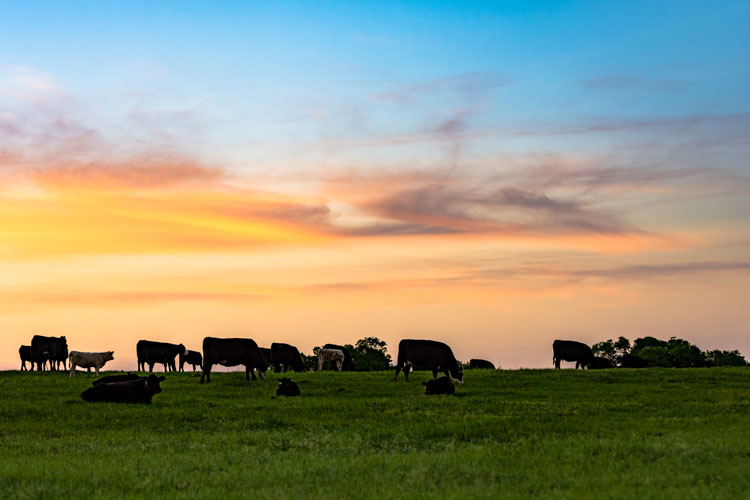
Animal agriculture has become an easy scapegoat for people concerned about the warming global climate. But a shift in that conversation is starting to take hold, said Frank Mitloehner during the Dairy Cattle Reproduction Council Annual Meeting.
Mitloehner, a researcher at the University of California, Davis well-known for his work in climate, was referring to a new metric used to describe the potency of greenhouse gases. This is important for agriculture because the main gas produced by livestock — methane — is vastly different from the greenhouse gas largely produced by transportation and industry, carbon dioxide (CO2). Until recently, though, they were generally treated the same in climate discussions.
“Methane is not just produced; it is also destroyed,” explained Mitloehner. While methane does have more heat-trapping potential than CO2, it exists in the atmosphere for a fraction of the time other gases do. Soil captures methane and environmental chemical reactions destroy it naturally, creating a cycle instead of continuous addition. After about 10 years, a methane molecule is gone from the atmosphere, he said.
On the other hand, CO2 can exist for 1,000 years. Nitrous oxide, another greenhouse gas, has a half-life of about 110 years.
Based on their heat-trapping ability, all gases have a global warming potential (GWP) value. Generally, this is expressed by GWP100, Mitloehner said, which approximates a gas’s warming effect over 100 years. But for a flow gas like methane — one that enters and exits the environment and doesn’t simply accumulate — this overstates warming potential by a factor of three to four.
Mitloehner pointed to a new metric developed by scientists at Oxford University referred to as GWP* that accounts for how methane is removed from the atmosphere, which occurs because of its natural composure, cyclic reactions, and agricultural efforts like anaerobic digesters. GWP* has also been gaining traction with people like physicists involved with the Intergovernmental Panel on Climate Change (IPCC), he said, because it simply makes more sense mathematically to look at how methane is being destroyed in the atmosphere.
Its wider adoption should allow for a more accurate picture of how agriculture affects the environment. Mitloehner said his research informed the Food and Agriculture Organization’s (FAO) most recent update that livestock accounts for 11% of greenhouse gases in the world. In the U.S., data from the Environmental Protection Agency indicates that animal agriculture is responsible for about 4% of greenhouse gases.
A recycling solution
This does not mean animal agriculture doesn’t need to worry about reducing emissions, though, Mitloehner continued. Instead, it highlights how we have an opportunity. Consider that because methane is recycled in the atmosphere, a stable level of emissions means only a stable level of warming, but no additional warming. Compare that to CO2, which contributes to more warming even when emissions are constant because of its long life and accumulation in the atmosphere.
Similarly, that means that when methane emissions are reduced, warming can actually be reduced. That occurs at a faster rate than when CO2 emissions are cut because that gas will take longer to be removed from the atmosphere.
“We can reduce warming when we reduce methane. That’s not true for other gases,” Mitloehner summarized.
Reducing warming results in a more stable climate that becomes better for farming because there is less extreme weather like heat and drought. That’s important because of our growing world population, which will need the nutrient density animal agriculture provides.
Animals also play a critical role in making the most of the agricultural land we have. Removing animal agriculture and ruminants would take about two-thirds of agricultural land out of production because it isn’t arable for crops, Mitloehner said.
Though this side of the climate picture doesn’t often get told, it is the side that animal agriculture must share while continuing to improve. “Our sector has been all too quiet about this,” he said. It’s an important part of the piece, so accuracy matters, and getting GWP* into the climate discussions is a valuable place to start.








